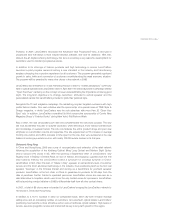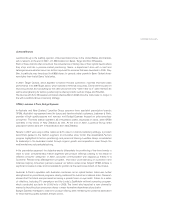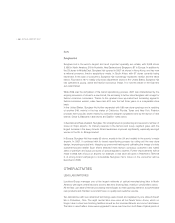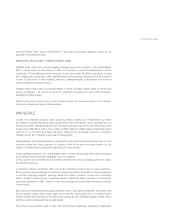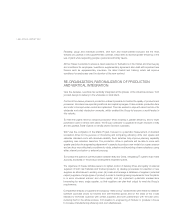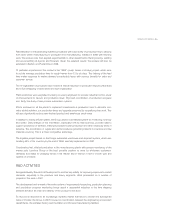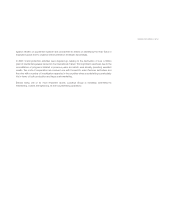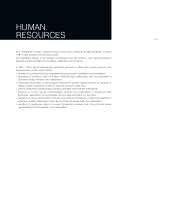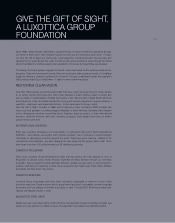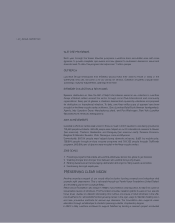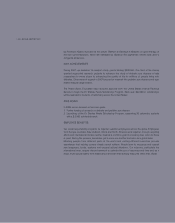LensCrafters 2007 Annual Report Download - page 45
Download and view the complete annual report
Please find page 45 of the 2007 LensCrafters annual report below. You can navigate through the pages in the report by either clicking on the pages listed below, or by using the keyword search tool below to find specific information within the annual report.> 44 | ANNUAL REPORT 2007
Flexibility, group and individual overtime, shift work and result-oriented bonuses are the main
features of Luxottica’s new supplementary contract, which aims to achieve greater efficiency in the
use of plant while respecting people’s personal and family needs.
All this makes it possible to ensure a rapid response to fluctuations in the market and improve pay
and conditions for employees. Luxottica’s supplementary agreement also dealt with important new
themes such as supplementary insurance, the labor market and training, which will improve
conditions for employees over the duration of the new contract.
RE-ORGANIZATION, RATIONALIZATION OF PRODUCTION
AND VERTICAL INTEGRATION
Over the decades, Luxottica has vertically integrated all the phases of the industrial process, from
product design to delivery to the wholesale or retail client.
Control of the various phases of production makes it possible to monitor the quality of products and
processes, introduce new operating methods and exploit synergies. It also enables production time
and costs to be kept under control and optimized. This has worked in step with direct control of its
wholesale and retail distribution networks, which enabled the Group to become a world leader in
this industry.
To meet the urgent need for reduced production times resulting in greater efficiency, and to lower
purchases costs of lenses and cases, the Group continued to upgrade its buyer structure in Italy
and at Luxottica Tristar Optical, its wholly owned Chinese subsidiary.
2007 saw the completion of the Matrix Project, focused on systematic measurement of standard
production times for the purpose of monitoring and comparing efficiency (time and space) and
calculate standard costs with absolute reliability. Such activities help improve planning capability
regarding new collection launches. The production office in particular will be able to know with
greater precision the engineering department’s capacity to produce new models for a given season
and can thus more effectively coordinate its study, selection and launching of new collections, using
either internal production or external sourcing.
To increase the speed of communication between Italy and China, integrating IT systems was made
a priority, especially in the product development engineering area.
The objectives of theses initiative were to (i) tighten control of delivery times and quality of external
suppliers of both raw materials and finished products; (ii) develop procedures for selection of new
suppliers as alternatives to existing ones; (iii) create and manage a database of suppliers’ potential
output (suppliers of single types of product) in order to handle growing requirements from the plants
in a more structured manner and more rapidly; and (iv) implement systematic medium-term
forecasting for every single supplier, so that suppliers can plan their output to meet the Group’s
requirements.
Comparative analysis of suppliers and ongoing “make or buy” assessments were made to establish
optimum purchase prices for finished and semi-finished goods and on the basis of this it was
decided to terminate business with certain suppliers and form partnerships with the best ones,
involving them in the whole process, from creation to engineering of models; or produce in house
to increase manufacturing efficiency and cost effectiveness.



